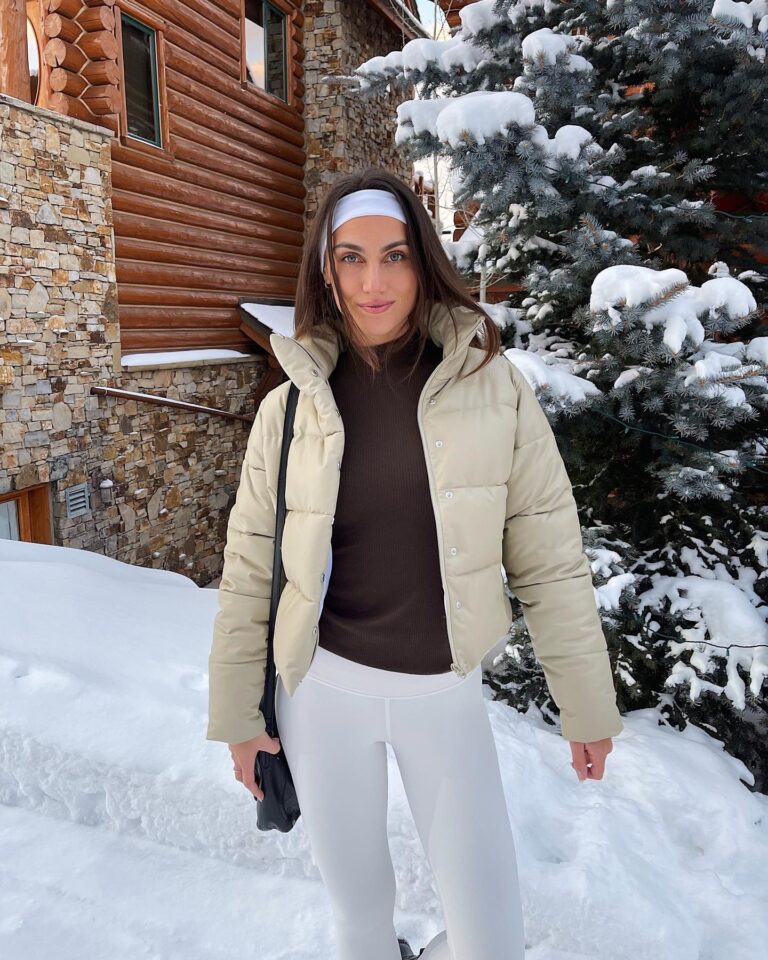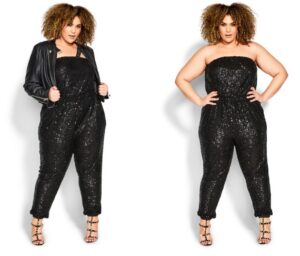Wear warm and moisture-wicking base layers under snow pants. Proper attire is a must when engaging in winter sports such as skiing, snowboarding, and snowmobiling.
Choosing the right clothing can be daunting, but tackling the base layer is an excellent starting point. The first layer of clothing needs to fit snugly and prevent moisture buildup by wicking away sweat and water. Furthermore, it should trap body heat and insulate you from the cold.
The second layer provides additional insulation and promotes ventilation. The third and final layer is for protection against wind, water, and snow. Snow pants, designed with waterproof and breathable fabrics, let you stay warm and dry. But what should you wear under snow pants? In this article, we’ll discuss some of the best base layer options for snow pants.

Credit: bearfoottheory.com
Understanding The Importance Of Layering
When it comes to staying warm and comfortable under your snow pants, understanding the importance of layering is vital. Wearing the right layers can help regulate your body temperature, keeping you warm and dry throughout your snow activities. Here are some key points to keep in mind:
The Importance Of Staying Warm And Dry
Wearing the right layers under your snow pants is essential for staying warm and dry while on the mountain. Without proper insulation and moisture-wicking materials, you risk losing body heat and becoming wet, which can lead to discomfort and even hypothermia or frostbite.
Here are some things to consider:
- Your base layer should be made of moisture-wicking materials like synthetic blends or wool to pull sweat away from your skin and provide warmth.
- Your mid-layer should be made of insulating materials like fleece or down to provide warmth and trap heat close to your body.
- Your outer layer should be a waterproof and breathable shell that protects you from the snow and wind while allowing moisture to escape.
The Risks Of Hypothermia And Frostbite
While the snow may seem like a winter wonderland, it’s essential to be aware of the risks associated with hypothermia and frostbite. These conditions occur when your body loses heat faster than it can produce heat, leading to dangerously low body temperatures.
Frostbite can occur when skin and underlying tissues freeze, leading to cell damage and possibly amputation. Here are some things to look out for:
- Symptoms of hypothermia may include shivering, fatigue, confusion, and unconsciousness.
- Symptoms of frostbite may include numbness, tingling, aching, and blisters.
- Dressing in layers can help prevent hypothermia and frostbite by regulating body temperature and protecting against the cold.
The Benefits Of Layering
Layering under snow pants provides numerous benefits beyond staying warm and dry. Layering allows you to adjust your clothing to changing weather conditions and activity levels, ensuring that you remain comfortable throughout your day on the mountain. Here are some additional benefits:
- Layering allows you to remove or add clothing as needed to regulate your body temperature, preventing overheating or becoming too cold.
- Layering helps reduce odor and sweat buildup by allowing moisture to evaporate and reducing the need for frequently washing your snow pants.
- Layering gives you more flexibility to change your clothing depending on your activity level and the weather conditions throughout the day.
By properly layering your clothing under your snow pants, you can enjoy your time on the mountain while staying warm and dry, reducing the risk of hypothermia or frostbite, and experiencing all the benefits of layering. Remember to choose the right materials and adjust your layers as needed to maximize your comfort and safety.
Base Layers: Keeping The Body Warm
Winter vacations are always exciting, and experiencing the snow is one of the perks. Snow pants keep us warm and dry, but what should we wear underneath? This blog post will focus on one of the key components of staying warm in winter – base layers.
The right base layer can make a huge difference in keeping the body warm and comfortable. Let’s talk about the materials, benefits, and how to choose the perfect base layer.
Materials Used For Base Layers
Base layers come in different materials, each with its unique features. Here are some of the most common materials used for base layers:
- Merino wool: It is naturally antimicrobial, moisture-wicking, and quick-drying. It is also incredibly warm and soft.
- Synthetic fabrics: These are usually made of polyester, nylon, or spandex. They are moisture-wicking, quick-drying, and offer great breathability.
- Silk: It is lightweight and very warm. It is also great for people with sensitive skin.
The Benefits Of Wearing A Base Layer
Wearing a base layer has several benefits, including:
- It keeps the body warm: A cold body can lead to hypothermia, but a good base layer can prevent that from happening.
- It wicks away moisture: Sweating can make the body feel cold, and a wicking base layer can keep the skin dry.
- It provides insulation: The right material can trap air between the layers, providing additional insulation.
- It prevents chafing: A good fit and seamless base layer can prevent chafing, making winter activities more comfortable.
How To Choose The Perfect Base Layer
Choosing the right base layer can be overwhelming, but here are some things to consider:
- Material: Consider the activity, temperature, and personal preference.
- Fit: It should fit snugly, but not too tight.
- Layering: Consider how it will fit with other layers.
- Odor control: Consider how it will odor buildup.
The right base layer can make a huge difference in keeping the body warm and comfortable in winter. Consider the material, benefits, and how to choose the perfect base layer to enjoy your winter activities to the fullest!
Mid-Layers: Insulating The Body
Snow pants are necessary for any winter activity, but what you wear underneath is just as important. Mid-layers are one of the essential layers when it comes to keeping warm and insulated during the colder months. Here are some materials, insulation types, and tips for choosing the best mid-layer to keep you warm and comfortable all winter long.
Materials Used For Mid-Layers
There are several materials used for mid-layers, each with different benefits.
- Merino wool: This natural fabric is incredibly warm, moisture-wicking, and antimicrobial, making it a popular choice for mid-layers.
- Synthetic materials: Made from polyester or nylon, synthetic materials are affordable, lightweight, and quick-drying. They aren’t as effective at retaining heat as other materials, but they are an affordable option for shorter periods outdoors.
- Down: Made from the insulating layer of bird feathers, down is one of the best materials for warmth. It is lightweight, compressible, and very warm. However, it does require special care and can be expensive.
Insulation Types To Consider
When choosing a mid-layer, consider the different types of insulation available.
- Synthetic insulation: Synthetic insulation is affordable, quick-drying, and lightweight. It is a good option for those on a budget, as it is less expensive than down insulation.
- Down insulation: Down insulation is incredibly warm and lightweight, making it a popular choice for mid-layers. However, it does require special care and can be expensive.
- Wool insulation: Wool insulation is warm, moisture-wicking, and antimicrobial, making it a great choice for mid-layers. It is more expensive than synthetic insulation, but it is a great option for those looking for a natural material.
How To Choose The Best Mid-Layer
When choosing a mid-layer, consider the following tips:
- Choose the right material: Consider the conditions you will be in and choose a material that will keep you warm and dry.
- Consider the type of insulation: Consider the type of insulation that will be best for your needs. Down insulation is good for when you need to stay warm and dry, while synthetic insulation is great for those on a budget.
- Choose the right fit: Make sure your mid-layer fits well and isn’t too tight or too loose. A good fit will help trap heat and keep you warm.
- Layer accordingly: Layering is the key to staying warm in cold weather. Make sure you have enough layers to keep you warm, but not so many that you’ll overheat.
When choosing a mid-layer, it’s important to choose the right material and insulation type for your needs. Consider the conditions you will be in, choose the right fit, and layer accordingly. With these tips, you’ll be able to stay warm and comfortable all winter long.
Outer Layers: Protecting Against Snow And Wind
When it comes to staying warm and dry when skiing or snowboarding, selecting the right outer layers to wear under your snow pants is crucial. Outer layers are the primary layer of defense against cold wind and snow, making them an essential part of your winter sports outfit.
Here, we will explore the different materials used for outer layers, the types available, and how to choose the most suitable one for your needs.
Materials Used For Outer Layers
Outer layers are typically made of materials that are both waterproof and breathable. The most common materials used for outer layers in snow sports, include:
- Gore-tex: Waterproof and breathable, gore-tex is a high-performance material that is durable and long-lasting. It is an excellent choice for those who spend extended periods outside in harsh weather conditions.
- Nylon: Lightweight and durable, nylon is an affordable option for outer layers. However, nylon alone is not waterproof, and it needs to be treated with a waterproof coating to be effective.
- Polyester: Like nylon, polyester is also not waterproof on its own and requires waterproof coating. However, it is a more environmentally friendly option than nylon.
Types Of Outer Layers Available
There are several types of outer layers to choose from, including:
- Hardshell jackets: Hardshell jackets are waterproof, windproof, and breathable, providing full protection against the elements. These jackets are most commonly worn by experienced skiers and snowboarders.
- Softshell jackets: Softshell jackets are made of stretchy and breathable materials and provide excellent freedom of movement. They are more breathable than hardshell jackets but not as waterproof.
- Insulated jackets: Insulated jackets provide warmth and protection from the cold. These jackets are ideal for those who tend to get cold easily while skiing or snowboarding. They are either made entirely of synthetic materials or are a combination of wool and synthetic materials.
How To Choose The Most Suitable Outer Layer
When choosing the best outer layer for you, consider the following factors:
- Weather conditions: Choose a hardshell jacket if you will be in extreme weather conditions. If you’re skiing or snowboarding in mild weather, a softshell or insulated jacket might be sufficient.
- Activity level: Consider your activity level. If you will be exerting significant energy, a breathable jacket is a must-have. Conversely, if you will be primarily sitting or standing, a jacket with higher insulation is more appropriate.
- Comfort: Opt for a jacket with comfortable features such as adjustable cuffs, zippers, and pockets. Selecting a jacket with the right fit is also important. Make sure you can move around freely while wearing it.
Choosing the right outer layer is critical to enjoying your time on the slopes while protecting yourself from the elements. With the right materials and types in mind, you can select an outer layer that meets your individual needs for comfort and performance.
Accessorizing For Protection And Comfort
When it comes to wearing snow pants, it’s essential to make sure you have the appropriate accessories to keep you warm and comfortable. Here are some must-have accessories to wear under your snow pants:
Gloves, Mittens, And Hand Warmers
Your hands are among the first body parts to feel cold when you’re out in the snow. Wearing the right gloves or mittens can make all the difference in ensuring your warmth and comfort. Here are some key things to keep in mind:
- Choose gloves or mittens made of materials like fleece, wool, or synthetic fabrics that can wick away moisture while keeping you warm.
- Look for gloves or mittens that have a waterproof or water-resistant outer layer to protect your hands from snow and moisture.
- Consider using hand warmers, which are small packets that generate heat when exposed to the air. Hand warmers can be a lifesaver on those extremely cold days.
Socks And Foot Warmers
Keeping your feet warm and dry when you’re out in the snow is crucial to staying comfortable. Here are some tips for choosing the right socks and foot warmers:
- Choose socks made of moisture-wicking materials like wool or synthetic fabrics. Avoid cotton since it can retain moisture and make your feet feel colder.
- Consider wearing two pairs of socks, with a thin liner sock underneath a thicker wool or synthetic sock, to provide extra warmth.
- Foot warmers, which are similar to hand warmers but designed for your feet, can help keep your toes toasty on those extra-cold days.
Hats, Scarfs And Face Masks
Your head, neck, and face are also vulnerable to the cold when you’re out in the snow. Here are some tips for choosing the right accessories to keep them warm:
- Choose a hat that fully covers your ears and is made of a warm, moisture-wicking material like fleece or wool.
- Wear a scarf or neck gaiter to keep your neck warm and protect your face from the cold wind and snow.
- Consider wearing a face mask or balaclava to protect your face from the elements. Look for one made of breathable, moisture-wicking fabric that won’t make you feel too hot and sweaty.
Accessorizing appropriately when wearing snow pants is crucial to staying warm and comfortable when you’re out in the snow. By following these tips and choosing the right accessories, you’ll be able to enjoy your time outdoors even in the coldest weather.
Conclusion: Stay Warm, Comfortable, And Safe
Tips For Dressing Warm In Extremely Cold Temperatures
When it comes to wearing snow pants, it’s not just about fashion. It’s about staying warm, comfortable, and safe. Follow these tips to ensure you’re dressing appropriately for your winter activities:
- Layer wisely: Start with a moisture-wicking base layer to keep sweat away from your skin, followed by an insulating layer, and a waterproof outer layer.
- Cover your extremities: Don’t forget to wear insulated gloves, socks, and a hat or headband to keep your hands, feet, and ears warm.
- Don’t overdress: While it’s important to stay warm, overdressing can lead to sweating, which can make you feel colder in the long run.
- Ventilate: Look for snow pants with vents that can be opened to allow heat to escape when you’re feeling too warm.
- Consider your activity level: If you’re going to be doing something particularly strenuous, such as skiing or snowshoeing, you may need fewer layers than if you’re going to be sitting for long periods.
- Don’t forget sunglasses: Snow can reflect sunlight, leading to eye strain and headaches. Protect your eyes with sunglasses or goggles.
Importance Of Choosing The Right Gear
Wearing proper snow pants and gear isn’t just important for comfort, it’s also crucial for your safety. Here are some things to keep in mind when selecting your winter gear:
- Look for waterproof fabrics: Snow pants made with gore-tex or another waterproof material will keep you dry and comfortable.
- Check for reinforced knees and seat: If you’re planning on spending a lot of time on your knees or sitting in the snow, reinforced areas can help prevent wear and tear.
- Opt for adjustable waistbands: Snow pants with adjustable or elastic waistbands will allow for greater freedom of movement and a more comfortable fit.
- Try before you buy: It’s important to try on snow pants before you buy them to ensure a proper fit and to make sure they’re comfortable for your planned activities.
- Consider the temperature rating: Different snow pants come with different temperature ratings. Make sure you choose a pair that’s appropriate for your climate and activity level.
Remember, staying warm, comfortable, and safe in the snow is all about choosing the right gear and dressing appropriately for your activities. By following these tips, you can make sure you’re ready for whatever winter brings your way.
Frequently Asked Questions Of What To Wear Under Snow Pants
What Is The Best Fabric For Snow Pants?
The best fabric for snow pants is nylon, polyester, and gore-tex because they are waterproof, windproof, and durable. These fabrics are designed to keep you warm and dry in harsh winter weather and have an inner lining to add more insulation.
Do I Need To Wear Layers Under Snow Pants?
Yes, it is recommended that you wear layers under snow pants to keep you warm and comfortable. You can wear a thermal base layer, mid-layer like fleece, and an outer layer like snow pants. Layering helps regulate body temperature and prevents sweating.
Should Snow Pants Be Tight Or Loose?
Snow pants should fit you correctly – not too tight nor too loose. A perfect fit allows you to move freely, keeps you warm, and retains heat. When buying snow pants, check the size chart and consider your body shape and comfort level.
Can I Wear Jeans Under Snow Pants?
No, wearing jeans under snow pants is not recommended. Jeans are not designed to keep you warm and can quickly get wet when snowboarding or skiing. Instead of wearing jeans, opt for thermal leggings or fleece-lined pants to add insulation.
How Do I Choose The Right Size For Snow Pants?
Choosing the right size for snow pants can be challenging, but you can use a sizing chart to determine your correct size. Measure your waist, hips, and inseam and compare them with the manufacturer’s size chart. Additionally, consider trying snow pants on before purchasing to ensure the perfect fit.
Conclusion
Wearing the right clothes under snow pants is crucial to staying warm and comfortable during cold weather activities. From base layers to insulation layers, each piece serves a specific purpose in trapping heat and wicking away sweat. Depending on the temperature and physical activity level, one may need to adjust the layers accordingly.
It’s important to choose materials that are moisture-wicking, breathable, and quick-drying to prevent discomfort and hypothermia. By following these tips, you’ll be able to enjoy winter sports and activities without sacrificing comfort or warmth. Remember to always be prepared for changing weather conditions and have a great time outdoors!





